The Featured Creatures collection provides in-depth profiles of insects, nematodes, arachnids and other organisms relevant to Florida. These profiles are intended for the use of interested laypersons with some knowledge of biology as well as academic audiences.
Introduction
Leaves of the false-mastic tree (Sideroxylon foetidissimum Jacq.) commonly are attacked by a jumping plant louse, Ceropsylla sideroxyli Riley. Damage is often severe, but since the host itself is not highly commercialized, little attention has been given to control methods.
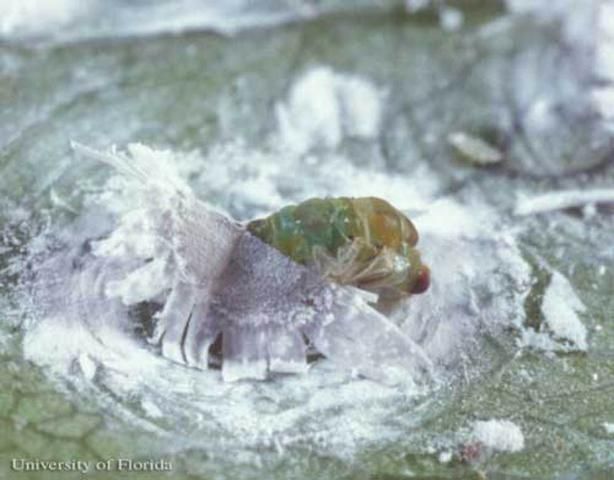
Credit: Lyle J. Buss, UF/IFAS
Distribution
This psyllid was originally described from Lake Worth, Florida, in 1885 by C.V. Riley. Since then it has been reported from other localities in southern Florida, principally along the Atlantic seaboard from Cape Canaveral south to Key West as well as in Zacatula, Guerrero, and Esmerelda, Chiapas, Mexico. Most of the Florida localities are taken from records in the files of the Division of Plant Industry.
Description
Psyllid nymphs are found on the underside of a leaf, embedded in small, scattered, cup-shaped excavations, which on the upper side of the leaf appear as rough, elevated pustules. A white waxlike (not flocculent) excretion covers the dorsal surface of the nymphs and makes them very conspicuous.
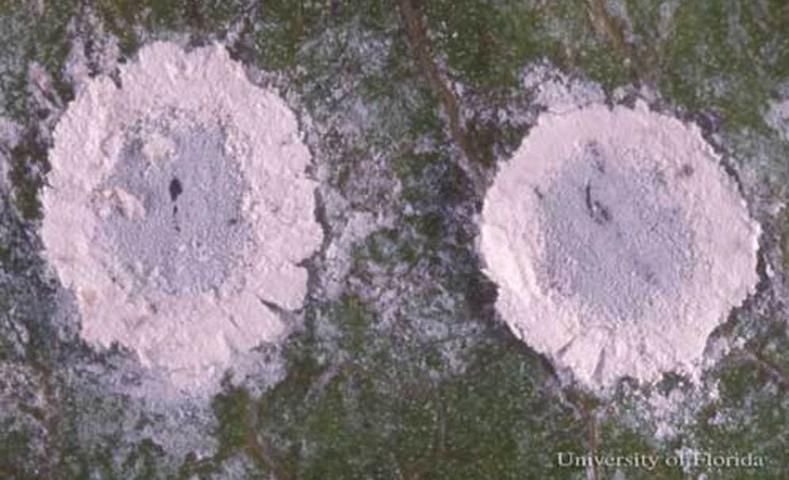
Credit: Lyle J. Buss, UF/IFAS
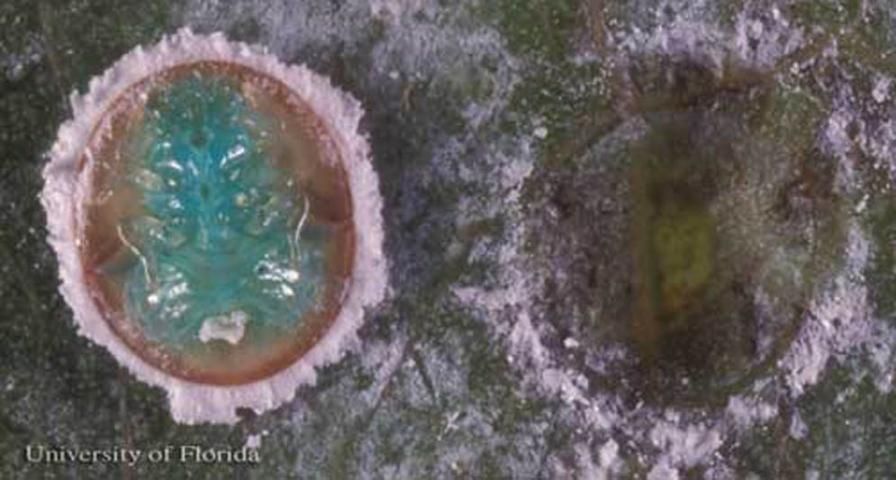
Credit: Lyle J. Buss, UF/IFAS
Adult psyllids of this species are 4 mm long to tip of folded wings. Their general color is green to yellow. The front of head, between antennae, including genal (=cheek) processes, the anterior 2/3 of prescutum and two broad stripes on scutum (=back), are dark brown. The antennae are dark apically. The wings are hyaline (glassy or transparent).
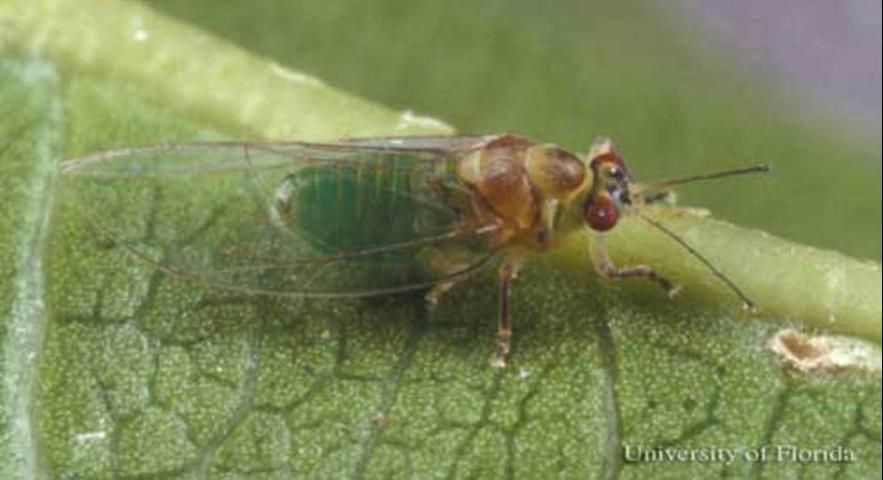
Credit: Lyle J. Buss, UF/IFAS
Microscopic characters of the head and wings are used to separate this psyllid from other species. No other closely related species is known from Florida. In fact, Arnett (2000) lists this species as the only member of its genus in America north of Mexico.
Host Plant
The host plant species, Sideroxylon foetidissimum, ranges from southern Florida, including the Florida Keys, north to the eastern coast to Cape Canaveral (Little 1953). It also is found in the West Indies (including Puerto Rico and the Virgin Islands), and a variety is found in Yucatan peninsula of Mexico and Belize. The USDA Plant database lists Florida as the only state that has this species (USDA 2006).
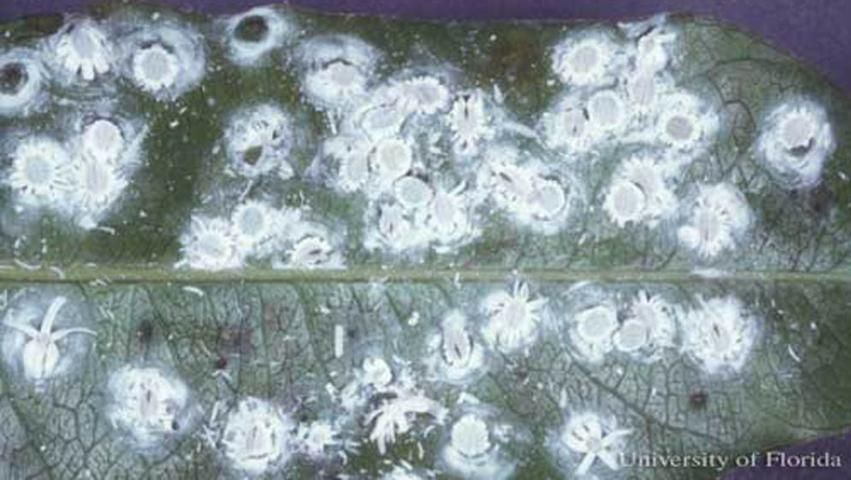
Credit: Lyle J. Buss, UF/IFAS
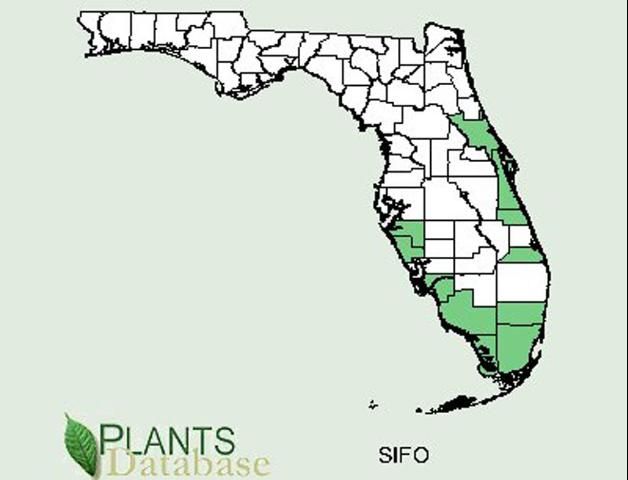
Little (1953) lists mastic and wild olive as other common names and gives Sideroxylon mastichodendron and Mastichodendron foetidissimum as synonyms. The specific epithet refers to the very ill-smelling, cheese-like odor of the numerous flowers.
This psyllid also attacks other Sideroxylon (Sapotaceae) species (Percy 2005).
Selected References
Arnett Jr RH. 2000. American Insects: A Handbook of the Insects of America North of Mexico. CRC Press. Boca Raton. 1003 pp.
Gann GD, Abdo ME, Gann JW, Gann GD Sr., Woodmansee SW, Bradley KA, Verdon E, Hines KN. (2006). Wild mastic, False mastic. Natives For Your Neighborhood. The Institute for Regional Conservation, Miami. http://www.regionalconservation.org/beta/nfyn/plantdetail.asp?tx=Sidefoet (April 2015).
Little EL, Jr. 1953. Check list of native and naturalized trees of the United States. USDA Agr. Handbook 41: 405.
Percy DM. (2005). Psyllids of Economic Importance. Psyllids or 'jumping plant lice' (Psylloidea, Hemiptera). http://www.psyllids.org/psyllidsPests.htm (April 2015).
Tuthill LD. 1944. The psyllids of America north of Mexico (Psyllidae: Homoptera). Iowa State Journal of Science 17: 443–660.
USDA. (2006). Sideroxylon foetidissimum Jacq. false mastic. USDA Plant Database. Sideroxylon foetidissimum Jacq. false mastic (April 2015).